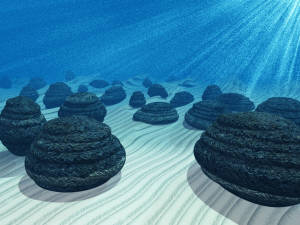
Best Website for Herkimer Diamond Information
Last Updated:

About this Webpage:


Free Website Where Herkimer Diamond Enthusiasts Share Information with the Public
Scroll down
Dr.C. did two talks at the Herkimer Diamond Festival (July)which are in a Youtube movie. The research on the Herkimer District is in need of samples and photos.
How can you help? Visit the "how to help" page.



W. David Hoisington, Ph.D.
Conditions before the Herkimer host rock
Giving birth to the Herkimer host rock
The third video shows a representation of multiple conditions during the time when the Herkimer host rocks were being made and the time just immediately following. An important feature is the presence of stromatolite layers - but they are only a part of the story. Stromatolite layers, of this same age, occur all over the world. Only in the Herkimer district do these layers contain the many different Herkimer diamond deposits. What is important to consider are all the various geologic events that combined to shape the Herkimer host rocks. Along with unique "open" (framework) stromatolites, there were sand layers and erosion (sabhka) events. Later there was the formation of collapse breccias and other karst features (known throughout the world during this period in geologic history). It is the combination of a unique set of events that gives us a very porous layers in a carbonate sequence, now called the Herkimer host rock. It is a rock primed and ready for the growth of Herkimer diamonds.
There is some question about the nature of the porous layers. There is little doubt that layers with high porousity existed, but exactly when did they develop the larger "pockets". This is a question that will be explored in the next presentations - one on faulting and the one on glaciers.
Faulting and multiple episodes of fluid movement
It is obvious that several mineral fluid events moved through the Herkimer host rock. Please click on the other minerals tab at the top of the page to see the sequence. What we do not know is exactly when these events happened. Currently it is a process of gathering "clues" and piecing together the best fit explanation.
It is also clear that there are many "cracks" in the Earth, called faults, which moved up and down. There is evidence to suggest that these faults served as conduits alowing deeper fluids to reach the porus layers of the Herkimer host rock. Part of this fluid movement was the movement of OIL. Once these fluids entered the rock they caused changes in the rock and also the growth of minerals - like Herkimer diamonds. What is left behind is a fossilized oil field that contains Herkimer diamonds.
There is much we do not know about the timing of the mineral events in relation to the various "mountain building" (faulting) events. More research is also needed here.
Weathering and Man
The effects of glaciers and man on the appearence of Herkimer Diamond deposits was critical to having the Herkimer deposits become available to the public. The glaciers removed hundreds of feet of rock exposing the Herkimer host rock to the surface and then man located the deposits and made them known to the public. It is also imortant to note that the last geologic event to affect the Herkimer diamond deposits was erosion - water running through the rock and weathering both rock and crystals. In some places there are large empty holes, or what might be called "mini-caves", in the Herkimer host rock. In interviewing experienced collectors, many have recounted stories of these empty holes. One mine owner said that there was one big enough to sit in. Another collector spoke of one six feet long, and a couple of feet high, with only a single crystal tucked way in the back. The recent weathering has also had an impact on the minerals - fractures in larger Herkimer diamonds, etching of dolomite and calcite, turning sulfides to rust, and moving around mud and small rock fragments. Many of the features that we see in the Herkimer host rock today are, in part, connected to post glacial weathering.
There is also the activity of man that sometimes affects what is observed in the field. In the Herkimer deposits to which people have access man has been there digging, hammering, sometimes using heavy equipment and always with the effect of changing the landscape. One of the most obvious has been to cause a change in the natural flow of surface and subsurface water. This leaves behind its own changes. Care needs to be taken not to interpret man made features as something natural.

June, 2012